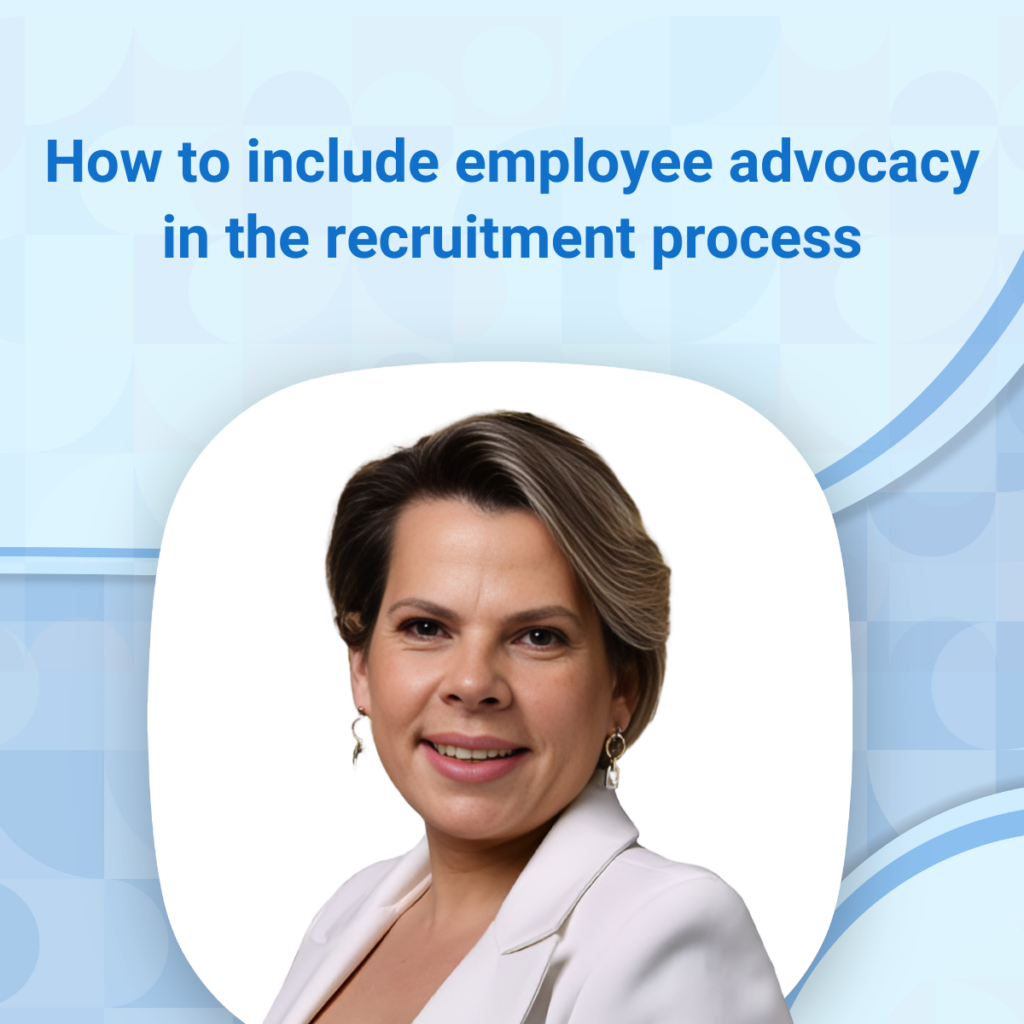Employee advocacy has been gaining a lot of popularity over the past few years.
Many companies, including Coca-Cola, Heraeus, and Nexign, launched programs to involve their employees in business support.
Even Cisco recently made headlines for training 84,000 employees as social influencers on LinkedIn.
Just like these organizations, you can also invite your internal “stars” who help you solve various business problems and grow your brand image.
How? Let’s find out.
5 key benefits of incorporating employee advocacy in the recruitment process
1. Enhances the employer brand
To promote the employer brand, employees can share their genuine experiences and accomplishments through first-person narratives.
This includes day-to-day work life, challenges they’ve overcome, and their growth within the company. It gives a realistic idea of what it’s like to work there.
The approach not only brings the company’s culture to life but also resonates more authentically with potential candidates.
Participating on industry-specific platforms like LinkedIn & Glassdoor allows employees to directly connect with the target audience, improving the company’s reach.
💡Bonus – Employees can use hashtags, join industry groups, and participate in discussions to increase visibility and engagement with potential candidates.
2. Boosts job postings
Employees can significantly contribute to recruitment efforts by leveraging their professional networks to share job openings, especially in areas where they possess expertise.
Here are some simple steps to do it—
- Share job openings on LinkedIn with a personal note on why it’s a great opportunity.
- Tweet about the role, tagging professionals or groups in the relevant field.
- Use industry forums to post about the opening, highlighting the unique aspects of the role.
- Participate in referral programs by recommending qualified contacts from your network.
- Include the job link in your email signature for a broader reach with every sent email.
Their active involvement in referral programs also amplifies the reach and effectiveness of these initiatives, tapping into a wider pool of potential candidates who might otherwise remain unreachable.
You might also like: A comprehensive guide to employee referral programs
3. Improves the hiring process
Getting employees involved in hiring, not just recruiters and managers, really adds a personal touch. It’s important to teach these team members how to interview and communicate well.
This can—
- Enhance candidate experience by offering a more comprehensive view of the team and company culture.
- Ensure a well-rounded assessment by incorporating diverse viewpoints and expertise.
- Strengthen the decision-making process with insights from those who understand the role’s day-to-day requirements.
- Build a stronger team dynamic by involving future colleagues in the selection process.
Thus, helping in picking the right people for the job.
4. Provides assistance to new employees
Employees play a crucial role in maintaining candidate engagement from the moment an offer is accepted until the start of their new role.
They can assist new employees by—
- Providing informal mentorship to help them navigate their new environment.
- Sharing resources and tips for success within the company.
- Facilitating introductions to other team members and key contacts.
- Acting as a friendly point of contact for any initial concerns or queries.
By doing so, they help acclimate new hires to the company’s environment and expectations, setting the stage for a smoother transition.
5. Supports the onboarding process
During onboarding, employee involvement is key to helping new hires assimilate into the company culture.
Serving as buddies or informal trainers can make the onboarding experience more interactive and welcoming.
This not only aids in the integration of new employees but also helps in reducing turnover during this critical adjustment period.
How do you launch an employee advocacy program in your company?
I recommend following these 7 steps to launch a successful employee advocacy program:
1. Define program goals
Establishing clear, measurable goals is crucial for the program’s direction and success. This step ensures that the program’s objectives are in sync with the company’s broader strategic goals.
Identify specific areas where employee advocacy can make a significant impact, such as enhancing brand visibility, improving recruitment, or boosting sales.
Set measurable targets, like a certain percentage increase in social media engagement or a specific number of quality candidate referrals.
2. Set the criteria and procedure for selecting program participants
The right participants can amplify the program’s effectiveness. Their enthusiasm and skills are pivotal in achieving the set objectives.
- For smaller companies, engaging all employees might create a more inclusive and comprehensive advocacy base.
- If you’re dealing with larger organizations, select a dedicated team based on specific criteria like social media presence, communication skills, and departmental representation.
This targeted approach ensures that the program leverages employees’ strengths and networks effectively.
3. Train and prepare
Having well-trained ambassadors really makes a difference.
When you give them the right training, they’re armed with the knowledge and skills to represent the company both accurately and convincingly.
Here are some quick ways to do this—
- Create a core training program that covers brand values, messaging, and social media policies.
- Incorporate role-playing exercises to simulate potential advocacy situations.
- Provide access to guides and FAQs for quick reference on company policies and brand voice.
- Host Q&A sessions with experienced ambassadors or company leaders for interactive learning.
- Include quizzes or feedback forms to gauge understanding and engagement.
- Ensure training materials stay current with the latest company news and social media best practices.4. Share feedback
Establish regular check-ins, create online forums or chat groups for ambassadors, and set up a feedback loop.
This could involve monthly meetings to discuss progress, share experiences, and gather insights for improvement.
4. Recognize and incentivize
Incentives motivate ambassadors and acknowledge their contributions, driving program engagement and success.
Beyond financial bonuses, consider recognition programs, professional development opportunities, or exclusive company perks.
Gamifying the process with leaderboards or contests can also be highly effective.
Read more: How to set up a robust incentive structure for recruiters?
5. Monitor and evaluate
Regular evaluation helps in understanding the program’s impact and areas for improvement.
Use tools like Google Analytics to track conversions from employee-shared content and track progress against the initial goals. Also, conduct surveys to gather participant feedback.
Adjust strategies based on these insights to keep the program dynamic and effective.
6. Share successes and growth plans
Celebrating the wins of your employee advocacy program boosts team spirit and showcases its value across the company.
Highlighting these achievements in internal newsletters, meetings, or on social media not only recognizes the efforts of your ambassadors but also sets a benchmark for what success looks like.
Turning these accomplishments into case studies provides tangible examples of the program’s impact, helping to refine strategies and adapt to new challenges.
Regular feedback from participants is also crucial for this evolution, ensuring the program grows with your company’s needs and market trends.
By following these steps, your employee advocacy program can become a powerful tool in achieving your company’s major objectives in no time.
Good luck!
Read more: 5 ways employee recognition programs help recruitment






